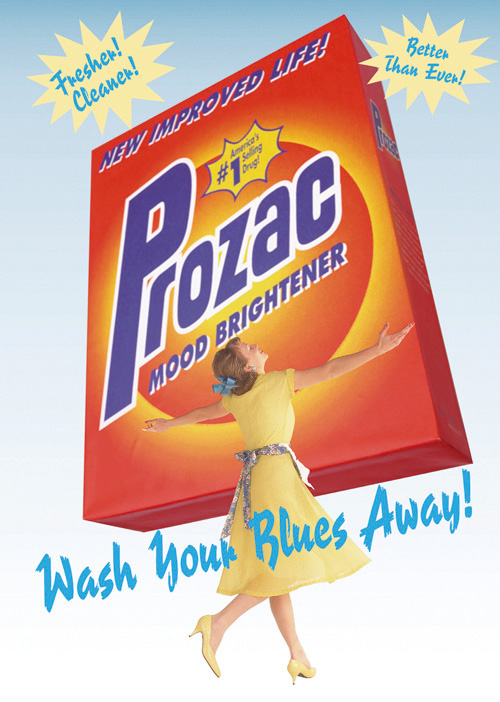Analyzing elements of a visual argument.
Analyzing elements of a visual argument. Visual arguments, too, can be analyzed using Toulmin’s methods. Look at the accompanying advertising parody: it contains few words, yet it makes a subtle argument. A group of students discussed this advertisement, observing that the image intends to evoke a 1960s-era detergent commercial. They came up with several possible claims that the ad might be making.
| possible claim | Pharmaceutical companies want to convince consumers that taking drugs to cure depression is no more serious than trying a new detergent. |
| possible claim | Consumers should beware of drug advertisements that make hard-to-prove claims aimed at getting customers to ask for a prescription. |
| possible claim | Buying products will not lead to greater happiness. |

All of these claims can be supported by the ad. If you were to choose the first claim, for instance, you might word a reason like this: This parody of a Prozac ad looks like a detergent commercial from the 1960s, but the product is a chemical that promises to “wash your blues away.” With some research into the actual dangers and benefits of antidepressants, you might find evidence that ads for such drugs sometimes minimize their downside and exaggerate their promise. You might also note that the ad’s design takes viewers back to a decades-old picture of domestic happiness, suggesting that Prozac could return all of its users to some mythically perfect time in the past—and you would be well on your way to an analysis of this visual argument.